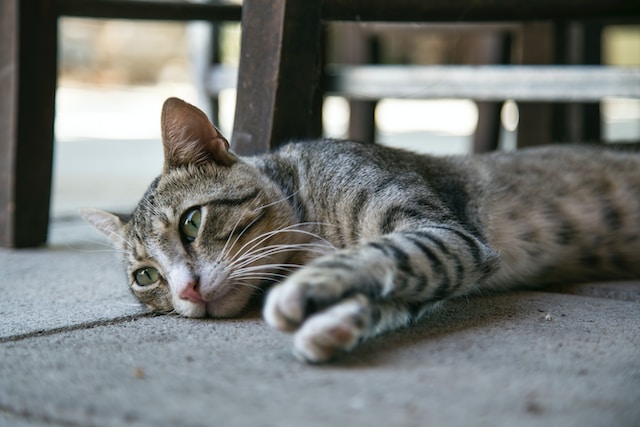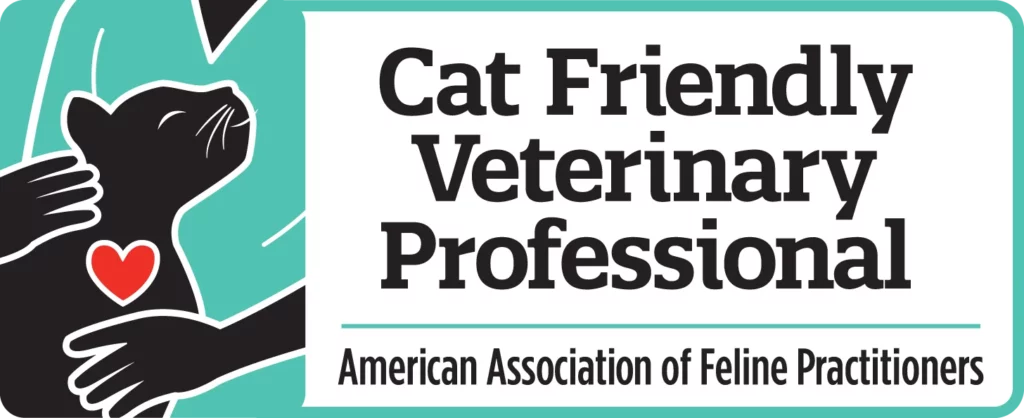I always tell my clients that cats are cute little balls of anxiety. Because cats can be so anxious, stress reduction for cats is a topic that comes up a lot during consultations. While reducing stress in cats is most easily resolved by removing the stressor, sometimes that can’t be identified or may not be something that can be removed. In these situations, you can still reduce your cat’s stress by trying some general stress reduction techniques.
For all of these suggestions, keep in mind they make time to begin working. Much like you wouldn’t expect going to therapy once to solve all your stress, you shouldn’t expect these suggestions to completely resolve your cat’s behavior issues or make them super calm instantly. Reducing a cat’s stress takes time and repetition so don’t give up if they’re not helping. If you do get stuck, however, you may want to set up a session with me so we can figure out what’s not working.
What Causes Stress In Cats?
Before we begin, it’s important to understand why cats may be so stressed out. This can help you identify the source of stress and hopefully find an easy fix.
Cats exist in a weird ecological niche as both fearsome predators that require lots of play while also being a prey species. This combination results in many of the quirky behaviors we see in our feline friends. Much like other prey species, cats are fearful of things that look like predators and anything that seems out of the ordinary as it may signal danger. Failure to respond to unexpected changes in the environment could lead to a cat becoming lunch for a predator.
Domestic cats have certain behaviors that they have an innate drive to engage in. Some of them are common among many types of animals, including eating, drinking, and reproducing. Others are species specific behaviors that aren’t universal to all animals. A few examples in cats include scratching, climbing high, and hunting. If a cat can’t safely engage in all these behaviors, it can lead to stress and frustration. Many cat behavior problems are a result of cats not being able to meet their behavioral needs or attempts to suppress a behavior rather than address the underlying need.

In other words, there are a lot of potential sources of stress for cats. It may be tension between multiple cats in a home or it could be lack of enough environmental resources for the cat. As unpleasant as it is to think about, you or someone in your home may be the cause of your cat’s stress. Stress reduction for cats involves addressing as many different causes of stress as possible while making the environment as cat friendly as you can.
How Can You Reduce Stress In Cats?
Clearly, there are a lot of possible sources of stress in cats. How can you possibly address all of them? In some cases, you may not have to address all possible sources of stress as the source of the stress may be obvious. Let’s start there and then talk about some options for when you just aren’t sure.
Reducing Stress With A Known Source
If the source of stress is known, the easiest intervention is to remove it. I hope this is pretty obvious. In some cases where you can’t completely remove the source of stress, such as if there are loud fireworks outside on a holiday, you may need to take a different approach. In these cases, using a technique called desensitization is the best way forward. Basically, you gradually exposure your cat to whatever is causing them stress at a level that they don’t become stressed. Gradually increase how long and how intense they are exposed to it over multiple sessions until they are used to it at full force.
This is different than a similar sounding technique that some people try called flooding. Flooding is where a cat is exposed to something that they are fearful or stressed out by at full intensity until they stop responding. Flooding isn’t a great way to reduce stress in cats because it relies on the cat being stressed out for it to work. It can also make a cat more sensitive to the stressful thing. Use desensitization instead.
Reducing Stress Without A Known Source
If your cat is displaying signs of stress such as not using the litter box consistently or aggressive behaviors, it’s trickier to reduce their stress. Always try to see if you can find a source of stress, but if you can’t there are some general stress reduction techniques to try.
- Add in additional vertical space via cat towers, scratching posts, and other cat resources spread out in separate locations
- Play with your cat, provide mental stimulation via training or food puzzles, and add enrichment to the environment
- Make your cat’s schedule as predictable and consistent as possible. Consider using an automatic feeder for predictable meal times.
- Make sure your cat’s litter box is easily accessible and clean. Consider getting a Litter Genie to make scooping easy.
- Stop using a squirt bottle, motion activated air canister, or other adversives on your cat
- Have consistent, positive, and predictable interactions with your cat
- Give your cat choice when it comes to interactions with your humans in the house and respect when they may not want to interact
You’ll notice the themes of predictability, environmental modification, and positive interactions above. Those are all things that help cats thrive and feel safe in their environment. When in doubt, ask yourself how you can give your cat more control over their world or make your home more feline friendly.
Stress Reduction For Cats Can Be Challenging
For some cats, reducing their stress even with the above suggestions may not be enough. It’s hard to think like a cat as we’re a different species. If your cat is having stress related problems, focus on figuring out what may be happening from their perspective. Just because you don’t see any reason for your cat to be stressed doesn’t mean they don’t have a reason to be stressed.










